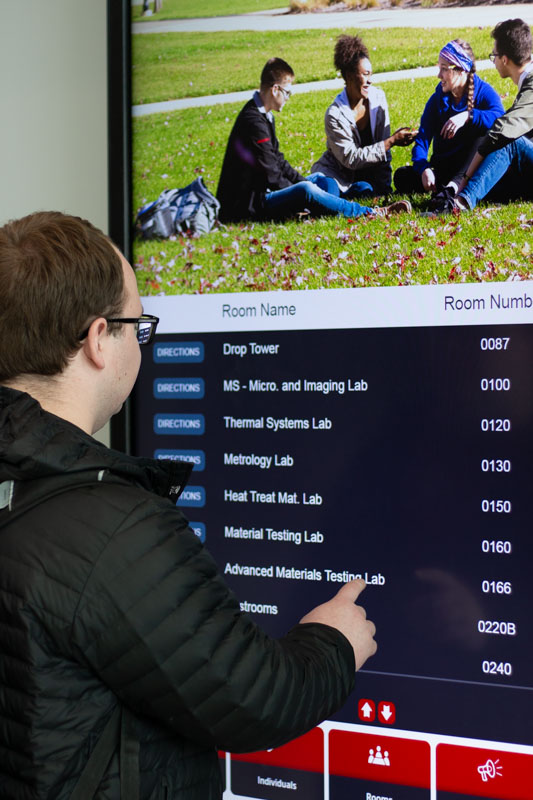
photos by Katelyn Edwards 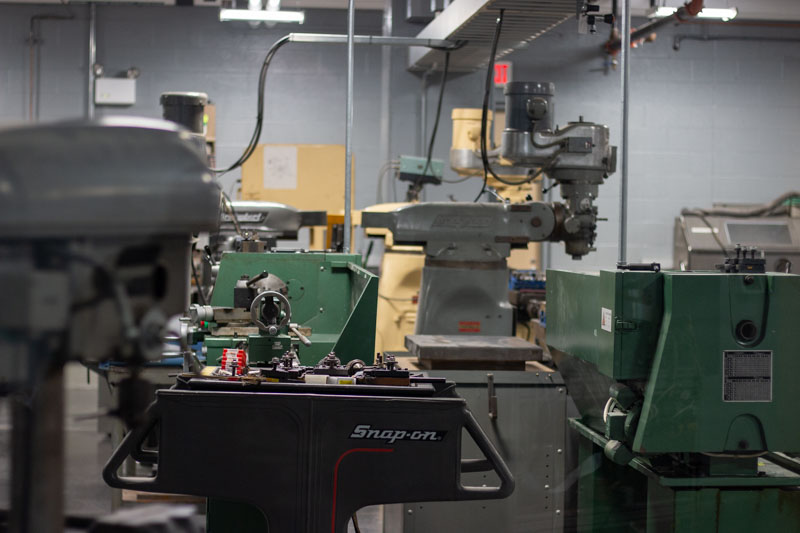
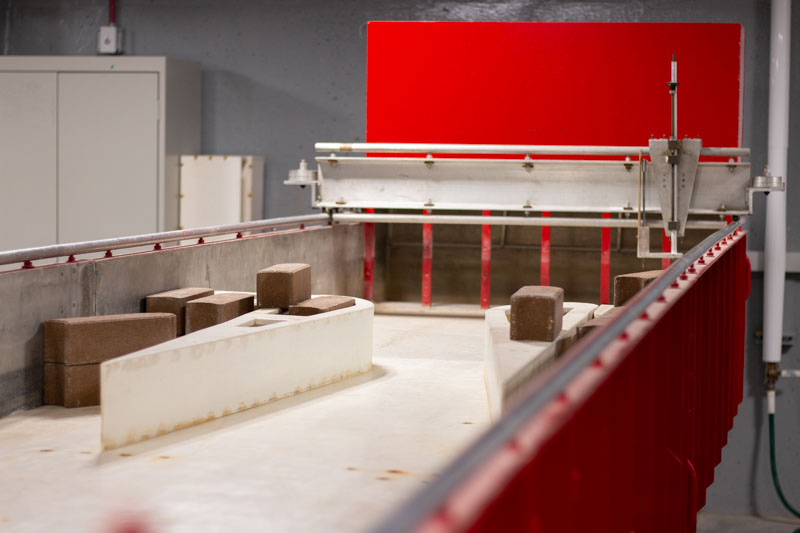
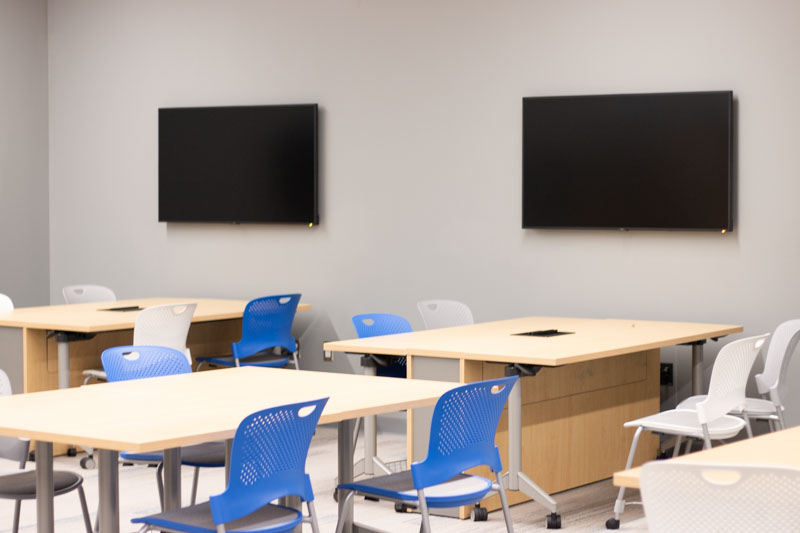
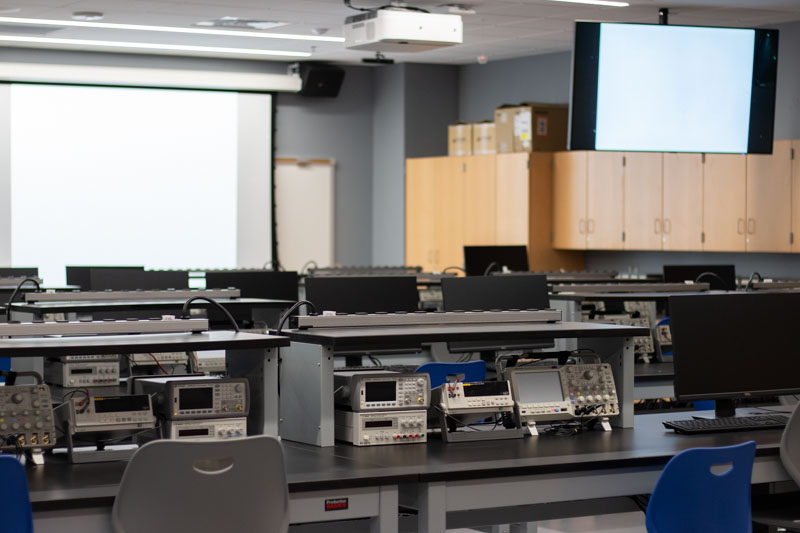
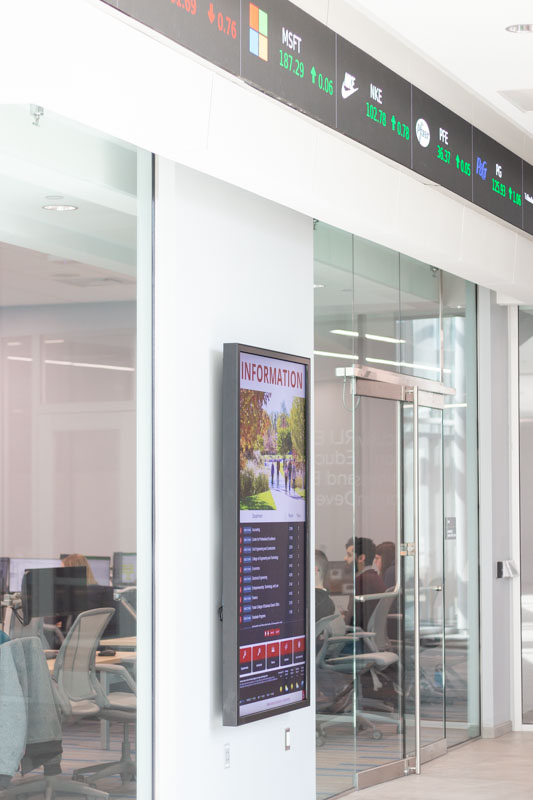
Although technical issues initially delayed moving classes into the Business and Engineering Convergence Center, technology now looks to be facilitating innovation.
When the BECC was initially conceptualized, Dean Lex Akers of the Caterpillar College of Engineering and Technology and Darryl Ransom, the former dean of the Foster College of Business, studied outside companies and intel organizations. The collaborative spaces and open layout of the BECC are similar to high-tech offices.
Most of the classrooms are built and designed with collaborative learning in mind. Majority of the seating is in “pods,” small tables at which students can sit and converse together, generally featuring USB and HDMI ports. The contents of student laptops can also be projected onto the monitors at the head of the room at the discretion of the professor.
“So far, the only thing we’ve really used is the TV,” said Megan Jones, senior business major. “But the professor just project the thing that’s on the main screen on all the TVs, which I personally think is unnecessary … I do like, though, that they have charging ports.”
Those in charge of the business college feel that the building will generate better communication between students.
“I think the thing that we’re trying to really instill is collaboration,” said Matthew O’Brien, Interim Dean of the Foster College of Business. “Most of the environments, the technology, the layout of the floorplan, the building itself, is supporting ‘what can we do to have great interactions?’”
Several courses in the Foster College of Business require partnering with an outside firm, and the BECC is designed to facilitate that interaction.
“What [we’re] trying to do is … ‘what are the tools that are available to us and how do we get students used to using those technological tools and applying those tools for better outcomes for them?’” O’Brien said.
Prior to the move into the BECC, a “training room” was established in Morgan Hall that mimicked the technology available in the BECC. This process allowed instructors to discover and troubleshoot issues such as the complicated nature of the lecture-recording features.
“We held massive amounts of interviews with faculty,” said Zachary Gorman, Bradley’s Chief Information Officer. “We asked, ‘what do we need to do? What are your goals for this space?’ What does convergence mean for both colleges?’”
When Gorman arrived three years ago he revamped the plans for the BECC, which had been in the works for years.
Various firms competed to design the technology in the building; the winner was a company called Diversify, which produced their own proposal specifying equipment and wiring requirements.
The main interfaces and routers were produced by a company called Crestron, but the monitors and other hardware are from various producers.
The audio-visual equipment in the BECC was roughly $6 million of the total $100 million spent on the building itself.
“You go about all of the interviews and try to figure out what the actual functional need is of how we teach, how students are wanting and desiring to learn,” Gorman said. “You guys want it to work, we want it to work, that’s my goal.”



